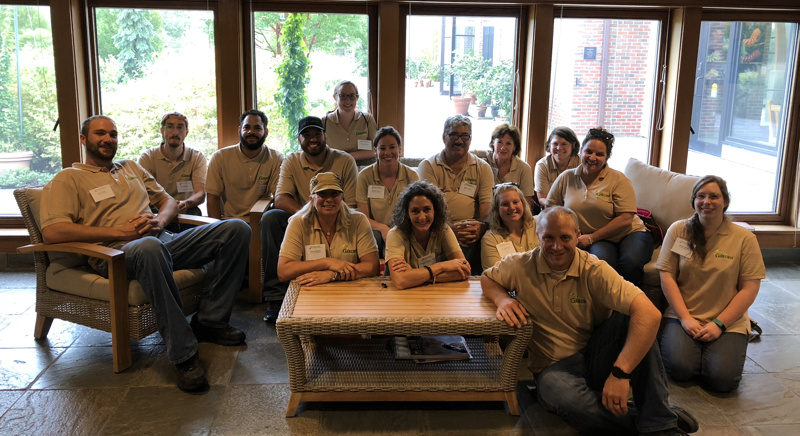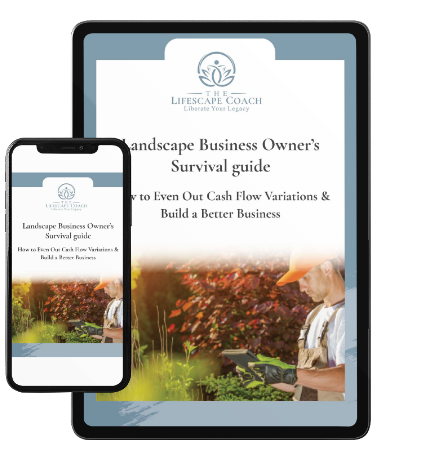How To Find The Perfect People For Your Landscape Organization
There is no question that the landscape industry is a people business. As an owner, you have to build relationships with clients and hire the right employees who can interface with them to maintain and grow those relationships.
As I shared in the last Academy Blog, the company culture is a critical element in your business success. So the big question, now that you know that culture is so important, and now that you’ve gotten clear on your company’s mission, purpose and values is this…
How do you find the right people to build that Dream Landscape Team?
It starts by throwing out the old concept of a job description. Again, skills are important, and you will need to share expectations of job duties and all that. But, what you really need is a “job value proposition” because you’re not just hiring an employee, you’re creating an asset for your company. Ask the question: What does this position bring to the party in terms of building value and revenue for your landscaping firm?
I was blessed to work with a coach who taught me that it is the POSITION that brings value to the company. It is the person who WORKS the position. In other words - get clear on how that position fits into the company structure. Then get clear on how that positions functions. Then get clear on what the position delivers in the form of value - revenue & profit - to the company. Only then can you find a “driver” of that position.
To ensure you’re maximizing your resources it’s important to think about the kind of employee you need for that position—what characteristics and talents do they need to possess? So to make this easy - think of a car - you wouldn’t think of hiring the same driver to operate a Hummer that you would to drive a Lamborghini, right? Totally different mechanics and functions and output and results. These cars travel different terrains, so need different mindsets - one’s all power the other is all speed. SO get CLEAR...what do you need the driver FOR?
Once you know, you can start imagining the driver. Now, back to landscape. If you need a person to focus on client interactions, you’ll need a personality type that suits this need. If you need someone to manage a construction crew, you’ll need a personality type that suits this need. Do you think it really makes a difference whether they have mastered the Microsoft Office suite or if they’ve acquired the ICPI certification?
Start by listing things that pertain to personality type, personal/professional goals, team orientation, coachability – anything that will help create value through that position. Do you need someone who has patience, is methodical, even keel and paced? Or do you need someone that is a go-getter, cheerleader-type that can rally the troops and encourage action? Do they have to be a morning person, or does that matter? Are they a joiner? Or are they super private and keep to themselves? None of this is right or wrong...but you need to get it down on paper before you even begin interviewing.

Now that I have you thinking about personality type, you need to look at the position value and ask yourself three fundamental questions:
- What needs to be done?
- How will it be done?
- When will it be done?
Think about of the positive and negative aspects of these questions, and that will help you choose the right personality type of the individual who should fill that position. In my company, I am adamant that the people who work for me demonstrate the ability to maintain “Grace Under Pressure.” I don’t want hotheads or people who take themselves too seriously. What about you? What’s that one personality trait that you can draw the line on?
As the position gets clearer and the picture of your ideal individual takes shape in your mind, consider what your relationship to that position will be:
- How much support will you be able to provide?
- Will you be able to avoid micro-managing?
- Will you commit to providing training?
- How will you measure their success?
- Will you be able to fully delegate responsibility?
Up to this point, this exercise has mainly revolved around developing an employment asset and indirectly how it will benefit your company. But for this position – and your business – to be successful, you also need to consider what’s in it for the employee. That means understanding how the position value might change if the individual you hire is really good at it.
 One of the biggest hurdles with small companies is that they want to find a good person and keep them where they are. Understandable right? If they are good at the job...keep them doing it! The problem is, good people are the same people that often pursue professional growth. Is there a path for advancement in your company? If not, you’ve just pre-installed a glass ceiling that they’ll bump up against sooner or later.
One of the biggest hurdles with small companies is that they want to find a good person and keep them where they are. Understandable right? If they are good at the job...keep them doing it! The problem is, good people are the same people that often pursue professional growth. Is there a path for advancement in your company? If not, you’ve just pre-installed a glass ceiling that they’ll bump up against sooner or later.
If that happens, chances are good you’ve also installed a revolving door with new employees constantly coming in to replace the experienced ones with no path up, only out. This may be a reality for your small organization, so your best resource will be the documentation of this job’s purpose, value, and processes so that hiring and training become turnkey for you.
If you’re fortunate enough to be able to provide a path for advancement, create some benchmarks for promotion and metrics to measure employee advancement. Good people are always looking to grow, and a clearly-defined process for achieving that growth will encourage them. Sometimes growth is less of an “up the ladder advancement” and more of a lateral expansion of what they already do. That’s a clarity you need to reach using your organizational chart as a tool to mastermind the growth of your company, and then to use in discussions with your employees.
Lessons I’ve learned the hard way.
I’ve been building my organization for a long time. Early on I worked with subs and independent contractors, but by 1993 I moved into the formal employer arena, building permanent staff. Mostly, I was hiring field workers. Often seasonal with an expectation of layoff. People came and went. Some came back for years and years, and it was great.
When I was ready to really build my organization, I realized I needed to hire with a different mindset (but remember...I didn’t know that term...company culture). So I hired for skills and wrote simple job descriptions. OMG did I go through people...always disappointed. I mean, why couldn’t they just DO the job as I wanted them to do it? I mean come on, it’s not rocket science! It’s landscape work for crying out loud!
I just wanted a person who would rescue me by taking the burden off my shoulders and the stress off my plate. I needed help, I needed someone to just know what I needed and do it!!!
The concept of finding a “rescue person” is an alluring one that sidetracks many business owners (yours truly included). The fact of the matter is that a rescue person simply doesn’t exist! Sorry to burst your bubble!
What you really need to do is look long and hard at the bigger picture and see what positions you need to create and what staff you need to build the long-term value for your business. If you don’t have an organizational chart with these positions clearly identified along with their requirements and inter-company relationships you’ll simply be hiring in the dark, casting about for people to rescue you. This misguided effort will only serve to impede your progress and success, not promote it. I call it herding cats! A thankless job that adds to your stress rather than relieving it.
Instead, organize your team and the positions within it the way you organize your outside project building. I’m sure you’re totally organized in that arena - doing what comes first….first, and what’s second….second, and so on. No other order makes sense. This is how you achieve maximum efficiency and value for your company and client.
In staff building, once you find the right people to fill those positions – those business assets – step two is your commitment to training and developing them to be the positive, productive team members that will contribute to the success of the company, themselves, and to you.
Freedom comes to you when your Dream Team is in place and consistently and predictably nurtured by you and each other!
Landscape Business Owners Survival Guide



